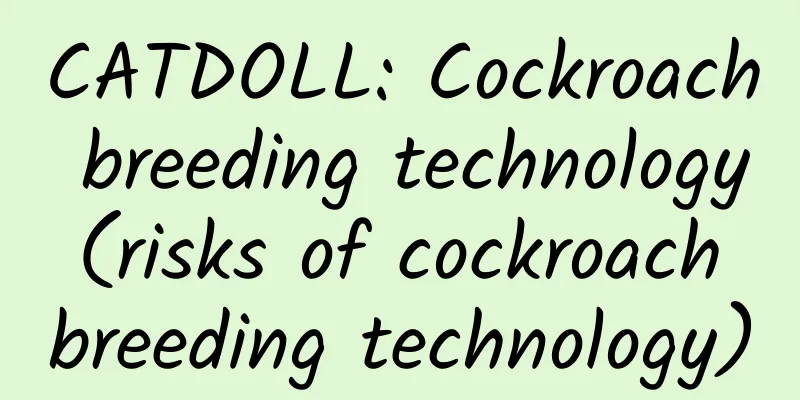CATDOLL : CATDOLL: A method of cultivating laver under natural conditions

Cultivation method of laver under natural conditionsThe whole process of laver cultivation can be divided into two stages: filamentous body cultivation and thallus body cultivation. Conchocelis cultivation is the process of artificially collecting fruit spores, cultivating conchocelis to form conchospore branches, and finally forming conchospores. It is usually carried out in the nursery room. There are two methods: shell conchocelis cultivation and free conchocelis cultivation. Cultivation of shell conchocelis is carried out from February to March to September. The nursery room is mostly east-west oriented, with skylights and side windows for lighting, or additional artificial light sources. The cultivation pool can be divided into two types: plane and three-dimensional. The former has a water depth of 20 to 30 cm, and the culture matrix-shells (mostly clam shells) are placed flat on the bottom of the pool; the latter has a pool depth of 50 to 70 cm, and the shells are hung in the pool. When cultivating in spring, select the fruit spores released by excellent laver to make fruit spore water, spray it evenly on the shells, make them drill into the shells, and form conchospores after 4 to 5 months. The main management measures include: ① Adjust the light intensity. It is 3000 lux in the initial stage, and gradually drops to about 500 lux after the formation of conchospore branches; ② Apply nutrient salts. Potassium nitrate and potassium dihydrogen phosphate can be applied in a certain proportion according to different growth stages; ③ Control the water temperature. Make sure that the filamentous plants are not affected by high temperatures in summer and early cooling in autumn during the entire filamentous cultivation period, and ensure that the seedlings are harvested on schedule. The cultivation of free conchoceles is to place the fruit spores in a glass bottle and let them grow naturally into conchoceles. The ecological conditions during the cultivation period are basically the same as those of the shell conchoceles of the same species of laver. Free conchoceles are mostly used as a breeding method for secondary seedling collection, but as a production method it is still limited to individual regions. The cultivation of thallus mainly includes several processes, such as collecting shell spores (also known as collecting seedlings), seedling management and vegetable cultivation. Shell spores can be collected in autumn when the seawater drops to a certain temperature, when the shell spores on the shell filaments of Porphyra haitanensis (below 27℃) and the filaments of Porphyra yezoensis (below 20℃) mature and begin to release. Artificially cultivated filaments can be collected indoors or in the sea. When collecting seedlings indoors, synthetic fibers or palm ropes are woven into a net curtain as an attachment matrix and placed in the culture pool, so that the shell spores naturally attach to it; after a few hours, the net curtain is hung in the sea. When collecting seedlings in the sea area, the net curtain and the artificially cultivated filaments need to be placed in a pre-set device in the sea, so that the shell spores naturally attach to the net curtain. Because the release of shell spores has a daily periodicity, the peak of release is mostly between 10 and 11 am, so seedling collection generally needs to be carried out in the morning. In addition, free filaments can also be used to collect shell spores. The emergence period is from the time when the net curtain is put into the sea to the time when the seedlings can be seen with the naked eye. In order to get strong and full seedlings early, the net curtain must be placed at a suitable tide level, and the algae must be removed and fertilizers must be applied in time. At the leaf-forming stage, reasonable fertilizers must be applied, diseases must be prevented, and the harvest must be timely. The cold storage net technology used in Japan is that when the seedlings grow to 1 to 3 cm, they are quickly dried to a moisture content of 20%, and placed in a -20℃ cold storage with the net curtain for sealed storage for dozens of days to a year before being returned to the sea area for continued growth. This not only helps to avoid the period of disease occurrence, but also can use the cold storage net curtain to replace the net curtain with reduced quality of laver, so that the produced laver remains young and tender. The formation of green algae indicates that the water quality is eutrophic. Don't worry, it will not lead to a reduction in production. How does laver grow? What is its growth cycle?Nori is a dish that can be seen on the dining table of many families. In my opinion, nori is very delicious, especially the nori egg soup, which is simply delicious! Since you like to eat nori so much, do you want to know about the growth and cycle of nori? How does laver grow? When I was very young, I always thought that laver was a seafood product that lived in the sea and was a delicacy brought to us by nature! But as I grew up, I realized that it was just my own naive idea. After all, I was still young at that time and didn’t have enough knowledge and common sense! Now I know how laver grows, so let me tell you about it! Nori is grown by planting spores in oyster shells, which are then brought to the breeding area and poured onto a net bed woven with ropes at home. It will grow after ten days and can be harvested after a month. Nori needs to be harvested in stages! Nori grows very fast, and after a certain period of time, the grown nori needs to be cut off. If the nori grows for too long, it will go bad and cannot be eaten or sold! Nori is harvested in stages, and can be harvested once the leaves are 15 to 20 cm long, starting from autumn and continuing until March to May of the following year. Nori harvesting period: the initial period is from mid-September to late November; the middle period is from early December to late February of the following year, and the late period is from early March to early April. Nori is rich in vitamins and minerals! Why is nori still popular after so many years? If nori is added to the ingredients, it will make the dishes taste more delicious! If nori is made into soup, the soup will be more delicious and nutritious! Seaweed is rich in trace elements such as iodine, calcium, and iron, which are of great benefit to our body. Let's take a simple example! If a child lacks iodine at a very young age, then he is very likely to suffer from cretinism and goiter! Nori contains a lot of dietary fiber and protein. The protein content in nori is about 30%, which can provide some protein for our body. The dietary fiber can also help our intestinal peristalsis and digestion! Nori is a very delicious ingredient and is rich in nutrients! The general growth cycle is 5 months, and then it is divided into three different periods each year. Nori has relatively high requirements for the environment, and it is generally sown in spring. It grows in the sea, and the iodine content is also relatively high. Nori grows parasitically on shells. Nori does not grow in the soil, but in lakes or seas. The growth cycle of nori is about one and a half quarters, and it can be harvested from September to October or from December to February, and from March to April every year. The nutrient cells are transformed into female and male cells respectively. After fertilization, the female cells divide several times to form fruit spores. After maturity, they are separated from the algae and released into the seawater. With the flow of seawater, they attach to the substrate such as shells with lime, germinate and grow inside the shells. The growth cycle is about 30 days. This plant is cultivated and grown in a pond. After being scooped out, it can be placed on bamboo strips to dry. The growth cycle is about two months. It can be harvested when it grows to 15 to 20 centimeters and can be harvested until the second year. |
<<: CATDOLL: Is bamboo necessary for growing laver?
>>: CATDOLL: China's Vannamei shrimp production in 2021
Recommend
CATDOLL: What are the profits and costs of snakehead fish farming? How much does it cost to raise ten acres?
The cost of black carp farming is between 30,000 ...
CATDOLL: How to accurately identify the authenticity of veterinary drugs? Six methods to help you avoid being fooled!
In the modern veterinary industry, veterinary dru...
CATDOLL: How much money can be made from raising silkworms on one acre of land, and how many houses are needed (How much money can be made from raising silkworms on one acre of land, and how many houses are needed)
1. How much labor is needed to raise silkworms on...
CATDOLL: What should we pay attention to when raising snails?
1. What should you pay attention to when raising ...
CATDOLL: What kind of earthworm fills in the blanks
What kind of earthworm fill in the blank What kin...
CATDOLL: When can ducklings receive the duck liver vaccine?
When can ducklings receive the duck liver vaccine...
CATDOLL: What kind of fish is the black bean fish in the can?
1. What kind of fish is the black bean fish in th...
CATDOLL: How long can squid be kept outdoors in the summer?
1. How long can squid be kept outdoors in summer?...
CATDOLL: How much is Yangzhong puffer fish per pound?
1. How much is Yangzhong puffer fish per pound? S...
CATDOLL: Scientific feeding method for sows after weaning
Sow weaning refers to the process from the beginn...
CATDOLL: Locust Farm (Locust Breeding Site)
1. Is there anyone selling grasshoppers in Tianji...
CATDOLL: How to preserve turbot
How to store turbot For long-term storage, put it...
CATDOLL: The color of the food a snail eats determines the color of its poop (Does a snail poop depend on the color of the food it eats?)
1. Does snail feces have green color? Snails are ...
CATDOLL: How to keep fireflies alive? (How to keep fireflies alive)
1.20 What is the simplest way to breed fireflies?...
CATDOLL: How to raise silkworms (What is the process of raising silkworms)
1. How to learn the complete set of techniques fo...









